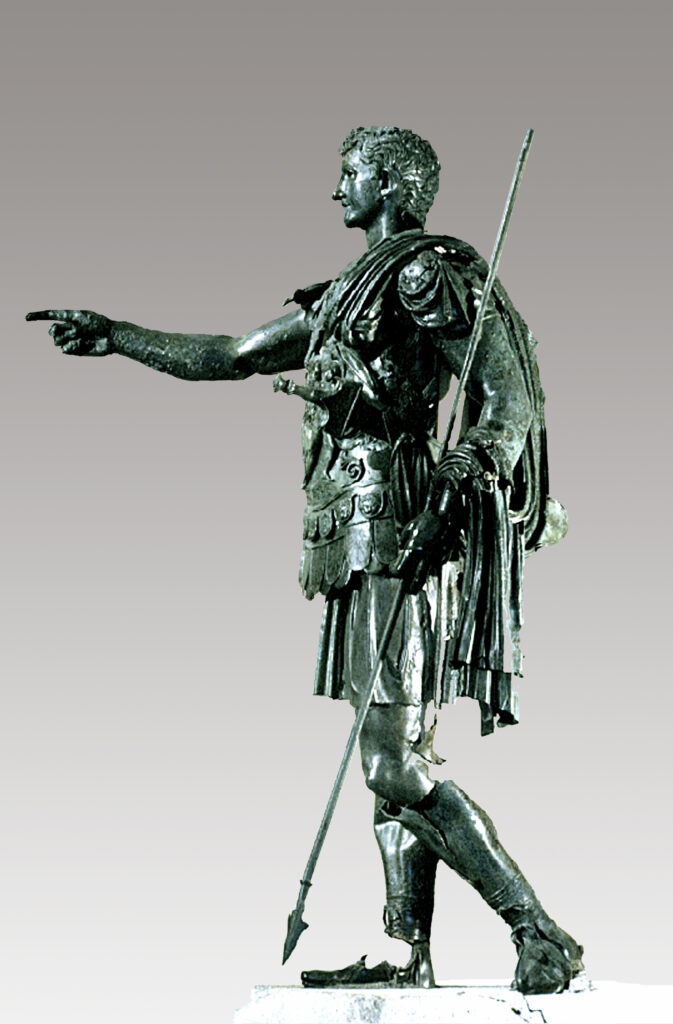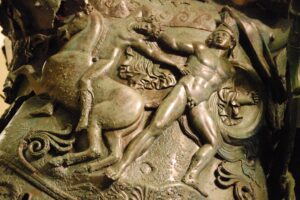
GERMANICUS, ONE STEP AWAY FROM THE EMPIRE
 Germanicus Caesar, prince-designate of the Empire, died at the age of 34 in 19 AD in Antioch, Syria, at the height of his political career and popularity. His character and military skills made him ideally the only one worthy of Augustus and the designated successor to his adoptive father Tiberius.
Germanicus Caesar, prince-designate of the Empire, died at the age of 34 in 19 AD in Antioch, Syria, at the height of his political career and popularity. His character and military skills made him ideally the only one worthy of Augustus and the designated successor to his adoptive father Tiberius.
His wife Agrippina brought his ashes back to Rome, accompanied by their children, including the future emperor Caligula, while Rome and all the cities in mourning paid tribute.
The image that has been handed down depicts him as the embodiment of the leader: an expert in arms and a skillful diplomat, a defender of the fusion of East and West, endowed with a charisma that is disruptive to intellectuals, plebs, aristocracy and the people.
Having passed through the interpretations of modernity, especially in 17th century France and at the time of Napoleon, the political and intellectual figure of Germanicus has come down to us as a model capable of transmitting the identity of Roman culture in Europe.
The tangible traces of this legacy can be seen in museums all over the world: the Louvre has a portrait of Germanicus in Greek marble found at Gabii; a painting by Poussin in the Minneapolis Museum of Fine Arts depicts his death, while Agrippina’s grief embodies a neoclassical and later romantic cultural model in Runciman’s etching at the Tate, and in a painting by Alma Tadema in the Pèrez Simόn Collection.
THE GERMANICUS OF AMELIA
The myth of Germanicus between ancient and modern is embodied in the bronze statue whose fragments emerged from the subsoil of Amelia in 1963 and which, reassembled and restored, is now displayed in a hall of the Civic Archaeological Museum.
The statue depicts Germanicus, dressed in military armour, in the act of adlocutio: in front of the deployed army, the emperor used words to reinforce the soldiers’ awareness and identification with the fate of the state, before a battle or military campaign.

The elaborate and symbolic muscular lorica with Achilles’ ambush on Troilus in the centre strongly stands out. Who chose this peculiar scene’s probably considered Germanicus as a new Alexander, whose favorite hero was just Achille. Or perhaps, he referred to the character’s royal lineage, who died young and by violent means, bringing him closer to Troilus; or finally, in Germanicus’ life, he recognized two fates, that of victor and that of victim. No one will ever be able to establish which is the truth, but this iconic interpretation makes the work even more fascinating. Like the Riace Bronzes, although little-known, this statue is the heritage of a local identity, promoted through what could become a brand, under the name of Germanico di Amelia.


